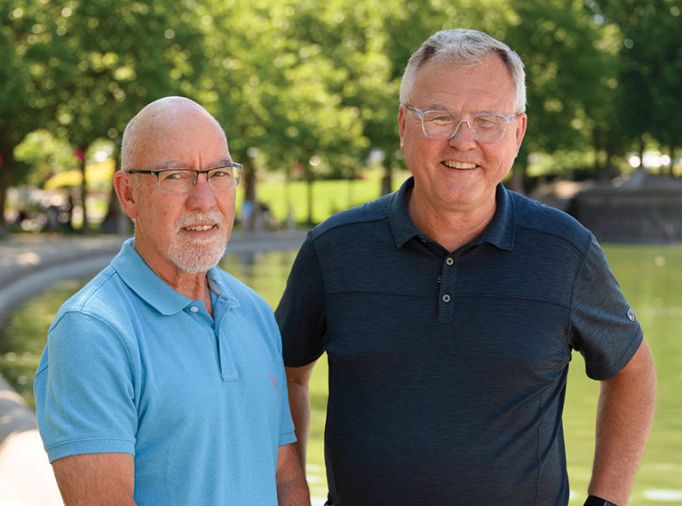What was the journey to building your own firm and how has your practice evolved?
We had a humble beginning 30 years ago with the two of us defining some basic principles that have guided us all these years: we have stayed small, provided full services, our marketing is providing exceptional services to our clients, and we continually look for ways to do better work. By having a small staff in an open studio environment, the principals can be involved with every project throughout the design and construction process and collaboration is always encouraged. As our firm has evolved, we have become increasingly aware of adapting our designs to the northwest climate as we want our buildings to “weather well”.
Can you trace your interest in architectural design back to a particular influence?
Rick: I remember at a very young age walking into a space and being moved emotionally by the natural light, the materials, the connection to the outdoors – it all mattered!
Dave: I came from science where problems had a unique specific answer…architecture does not. As Louis Kahn said, “The difference between a good architect and a mediocre one is that they both solve the problem they set out to solve, the good architect solves the right problem.”
How does your commitment to be in harmony with nature influence your design style?
Rick: Nature will always inform and influence architecture. When working on a site with multiple significant trees, rock outcroppings, and slopes, these features become design elements that cannot be ignored, and the architecture will be enhanced by their presence.
Dave: Buildings must fit in their environment. In the Northwest we get gray days, so keeping the water out and letting the light in are important features of our designs. If you view a building as a single entity, it opens the door to introducing materials that blur the distinction between inside and outside.
As you look to the future, are there ideas that should be in the front and center in the minds of residential architects?
Rick: Design with less excess! We should all be asking ourselves how we can be more mindful about being better stewards of our environment. We are exploring ways to show our clients not to build any more space than is needed, which should lead to a smaller carbon building footprint and ultimately less energy use. We make our homes “timeless” and last longer which will be more environmentally friendly too.
Dave: It’s important to look at work that has withstood the test of time and is relevant and good as ever. What is “trending” today will surely be “dated” tomorrow.
Favorite travel destination for inspiration?
Rick: Columbus, Indiana, home to one of the best showcases of modern architecture in the world. Additionally, any place where I can physically experience the work of influential architects John Lautner, Eero Sarrinen, I.M. Pei, and Louis Kahn.
Dave: Sea Ranch, California.
Do you have a dream project?
Rick: Where the client and architect agree and are aligned on every design decision and the result is a structure and space that seamlessly adapts to its natural environment. We have come close to making this happen a few times and those have been some of our most fulfilling completed projects.
Dave: Most of our work is confined by land use restrictions. Maybe something small on a large piece of land.
For more information visit: www.chesmorebuck.com






